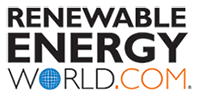 As microgrids go, this project is big. The $12.4 million microgrid scheme devised a consortium that includes Emera Maine, Nova Scotia Power and Toronto Hydro will comprise three projects, all of them linked together by Opus One software.
As microgrids go, this project is big. The $12.4 million microgrid scheme devised a consortium that includes Emera Maine, Nova Scotia Power and Toronto Hydro will comprise three projects, all of them linked together by Opus One software.
Emera Maine will combine solar power, battery storage and backup diesel generators at its operations center in Hampden, which controls its grid and its interactions with the New England ISO.
Nova Scotia Power will build a microgrid with wind power and both grid-scale and residential energy storage. And Toronto Hydro plans to integrate a series of microgrids designed to help distributed energy resources support local grid operations.
The overall project aims to demonstrate the ability of microgrids to trade power resources, provide load relief and help lower voltage in order to save money.
Together the consortium intends to show how advanced technology can be used to provide technical and economic signals to manage the exchange of electricity, which has been called “transactive energy.”
“This project not only will lower energy costs and increase reliability …. it will help us to manage distribution feeder load in the area, which will potentially defer the need for distribution investments,” Alan Richardson, president and chief operating officer of Emera Maine, said in a statement.
Click Here to Read Full Article
read more
 Duke Energy announced plans last week to expand its 1,065-MW Bad Creek pumped
Duke Energy announced plans last week to expand its 1,065-MW Bad Creek pumped  The U.S. energy storage market is in a period of transition.
The U.S. energy storage market is in a period of transition. This summer, just after Tesla Motors
This summer, just after Tesla Motors  US automotive manufacturer General Motors (GM) has said its expertise in electric vehicle batteries will help it to power 100% of its global operations with renewable energy by 2050, meeting annual demand of upwards of 9TW/h.
US automotive manufacturer General Motors (GM) has said its expertise in electric vehicle batteries will help it to power 100% of its global operations with renewable energy by 2050, meeting annual demand of upwards of 9TW/h. RICHMOND, Calif., and NEW YORK — Owners of grocery stores and other cold storage facilities in parts of Brooklyn and Queens can now receive incentives from Con Edison’s Neighborhood Program for installing Axiom Exergy’s thermal energy storage system. The Axiom Exergy Refrigeration Battery stores cooling instead of electricity to help businesses manage their energy usage, reduce demand charges on their electric bills, and prevent food spoilage. Over $5 million worth of Refrigeration Battery systems are set to be installed at supermarkets and other businesses in the Brooklyn and Queens areas covered by Con Edison’s Neighborhood Program. The 1.5-2 MW of energy storage set to be installed has the capacity to shift in aggregate of 6-8 MWh of energy. Businesses are eligible for incentives under the program and Con Edison is working with customers to reduce their energy usage while still having the lighting, heating and cooling, and appliances they need to run their businesses.
RICHMOND, Calif., and NEW YORK — Owners of grocery stores and other cold storage facilities in parts of Brooklyn and Queens can now receive incentives from Con Edison’s Neighborhood Program for installing Axiom Exergy’s thermal energy storage system. The Axiom Exergy Refrigeration Battery stores cooling instead of electricity to help businesses manage their energy usage, reduce demand charges on their electric bills, and prevent food spoilage. Over $5 million worth of Refrigeration Battery systems are set to be installed at supermarkets and other businesses in the Brooklyn and Queens areas covered by Con Edison’s Neighborhood Program. The 1.5-2 MW of energy storage set to be installed has the capacity to shift in aggregate of 6-8 MWh of energy. Businesses are eligible for incentives under the program and Con Edison is working with customers to reduce their energy usage while still having the lighting, heating and cooling, and appliances they need to run their businesses. TULSA, OK
TULSA, OK The UK-based energy storage project developer Camborne Energy Storage is the first company in Europe to install a grid-scale Tesla Powerpack system, following a recent installation in Somerset (England), according to an email sent to CleanTechnica.
The UK-based energy storage project developer Camborne Energy Storage is the first company in Europe to install a grid-scale Tesla Powerpack system, following a recent installation in Somerset (England), according to an email sent to CleanTechnica. BMW has a couple of initiatives to give a second life to used battery packs from its electric vehicles. Earlier this year, the German automaker announced
BMW has a couple of initiatives to give a second life to used battery packs from its electric vehicles. Earlier this year, the German automaker announced  RENO — Tesla officials on Thursday clarified earlier remarks and said Tesla’s Gigafactory under construction east of here is expected to begin producing lithium-ion batteries late this year for the electric car maker’s Model 3.
RENO — Tesla officials on Thursday clarified earlier remarks and said Tesla’s Gigafactory under construction east of here is expected to begin producing lithium-ion batteries late this year for the electric car maker’s Model 3.



